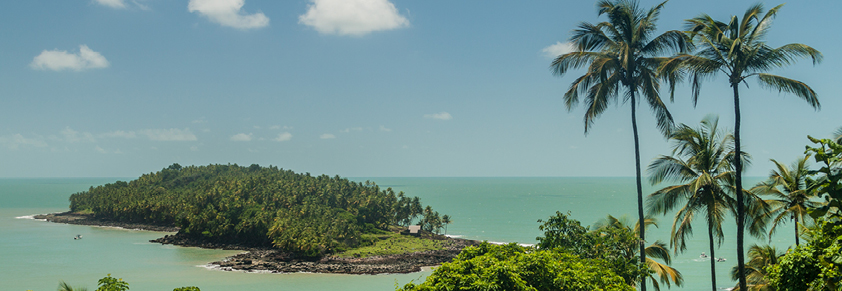A Penal Colony in French Guiana―The Infamous Devil’s Island
Devil’s Island, established during Napoleon III’s reign in the Second Empire of France, was originally conceived as a solution for housing political prisoners and criminals, prompted by the British deportation of prisoners to Australia. Situated in the northern part of French Guiana, this small rocky islet was a French penal settlement from 1852 to 1938, alongside two other islands, Royale and Saint-Joseph. During this time, over 50,000 prisoners were sent from France to the penal colony in French Guiana known as “Ile du Diable,” Devil’s Island.
The French government believed that sending prisoners to this colony would help stabilize its population and copy the success in Australia. The high death rate thwarted their plans. Ninety percent succumbed to the brutal labor conditions, diseases, and starvation prevalent on the island.
Classifications of Prisoners
The prisoners on Devil’s Island were categorized into three groups:
- Habitual criminals engaged in permitted work.
- Political prisoners and criminals with limited liberty.
- Felons subjected to hard labor.
The duration of a prisoner’s stay depended on their sentence length—those sentenced to less than eight years spent an equivalent time in French Guiana. Those with sentences exceeding eight years had to remain in the colony permanently. Post 1885, only criminals with sentences surpassing eight years were sent to Devil’s Island.
Harsh Conditions and Natural Barriers
Devil’s Island became the most infamous penal colony, marked by inhumane conditions. The combination of man-made horrors and the formidable natural barriers—such as an almost impenetrable ocean and jungle—made escape attempts dangerous, with numerous crawling, flying, and swimming threats awaiting anyone trying to break free.
Cultural Depictions
Several songs, a stage play, books, documentaries, and films, including the 1955 film “We’re No Angels” starring Humphrey Bogart and Joan Bennett, have featured this notorious island.
Want to Read a Penal Colony Book? Literary Explorations of Devil’s Island
The history of Devil’s Island has inspired various works of literature, offering diverse perspectives on the penal colony. Here are some notable books:
An Officer and a Spy by Robert Harris
A true story of the French officer Georges Picquart from 1896 till 1906, as he struggles to expose the truth about the anonymous and false evidence that sent Alfred Dreyfus to Devil’s Island.
The Dain Curse by Dashiell Hammett
In the process of solving a murder, the detective finds out that a wealthy, reclusive man from San Francisco covered up that he was an escapee from Devil’s Island.
Cargo of Coffins by L. Ron Hubbard
This fictional work tells the story of Captain Lars Marlin, who escapes Devil’s Island and confronts the man responsible for his unjust imprisonment, Paco Corvino.
Hurricane by L. Ron Hubbard
Wrongfully accused, Captain Spar has been condemned to suffer the brutality of the guards and the conditions on Devil’s Island. But they haven’t broken his will, and now, escaping, Spar is out to get the man who put him into the devil’s hands.
Papillon by Henri Charrière
An autobiographical novel recounting the author’s wrongful imprisonment on Devil’s Island and his escape, one of the most incredible feats of endurance and human cunning.
Dry Guillotine: Fifteen Years Amongst the Living Dead by René Belbenoît
A memoir by a former Devil’s Island prisoner recounting his 5 escape attempts and a description of the hell to be found in the penal colony. Belbenoît’s memoir was fictionalized by Blair Niles in 1928 in Condemned to Devil’s Island: The Biography of an Unknown Convict.
Devil’s Island: Colony of the Damned by Alexander Miles
A non-fiction work providing a historical account of Devil’s Island and its prisoners.
Please note that the literary works above offer a mix of fictionalized accounts and historical or biographical perspectives on the dark history of this inferno on Earth.
Summary
Devil’s Island stands as a chilling testament to the harsh realities of its time, evolving from a conceived solution for deporting political prisoners and criminals to a notorious penal colony.
Today, the islands and prison ruins serve as a tourist attraction. Absurd considering their dark haunting legacy marked by brutality and death. Then again, humans are remarkably curious.
References: Devil’s Island Fugitives
Other articles and resources you may be interested in:









Leave a Reply
Want to join the discussion?Feel free to contribute!